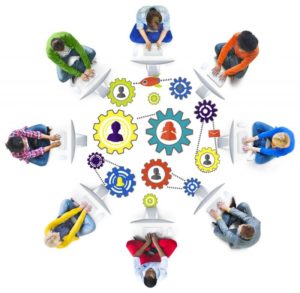Student expectations have shifted significantly and there is an expectation of access to high-quality learning materials and engagement in active learning as opposed to passive listening. Excellence in learning experiences will be those that achieve goals in both motivating students and encouraging deeper learning. Collaborative learning, when practised effectively, can transform classrooms into positive and shared learning environments.
Collaborative activities lead to improved and enhanced student performance outcomes and group interactions facilitate active learning, shared knowledge, and promote social interaction and a supportive learning community. In doing so, opportunities are provided for students to work together so that they can develop the necessary skills for working on a team which will also enable students to build social-emotional learning (SEL) skills. Collaboration also models how to work with others in real-world situations. Therefore, developing skills for collaboration within a digital learning space is a critical component for our students and their future.

Implementing the Digital Learning Space
Implementing collaborative and active learning approaches do not have to be complicated or time-consuming to generate effective student learning outcomes and achievement. A great deal of positive student learning entails understanding the position of other students, seeing what other students are going through, understanding that many of the problems that student X is experiencing are similar to, if not the same, as those experienced by student Y.
You can use digital spaces to help foster a deep sense of engagement for a particular class or course, and demonstrate the crucial element of instructor dedication to student learning and achievement. Instructors play a key role in the collaborative and active learning process by establishing the culture of student learning, accommodating their learning needs, and ensuring the classroom functions for its intended purpose, and foster a sense of desire to learn.
Collaborative learning spaces should offer emotional, mental, social and intellectual stimulation and affordances. Students can discuss and share ideas openly and freely, listen to one another, debate, defend their points of view and offer alternative points of view that might be informed by their personal experiences and perspectives. Additionally, they can raise questions for which there might not be any ready-made answers. Students, instructors, technology, and the desire to foster a positive culture are pivotal ingredients in collaborative learning within a digital learning space.
How students learn is also a critical factor in motivating them to pursue their learning to a mastery level. Today’s students were raised in a world of interactive technologies and they are energised when they can actively share ideas and work collaboratively together using technologies that allow them to share ideas freely, any time, at any place. Students develop problem-solving and other higher-order skills through interactions with the course content and each other. To support this, students need to be actively engaged in activities using technologies that enable them to participate. By using the appropriate technologies, collaborative learning spaces can be effectively implemented and facilitated. This need not be limited to Microsoft Teams, but can include Blackboard Collaborate https://eatsupport.tees.ac.uk/staff/knowledgebase/blackboard-collaborate-ultra/ and the use of the features and functionalities within Blackboard (to ensure a well-organised, consistently structured site, please refer to stage 3 of the Principles of Course Design for Hybrid Learning toolkit) https://blogs.tees.ac.uk/lteonline/2020/07/01/principles-of-course-design-3-structuring-your-weekly-content/ and using Microsoft OneNote to create personal workspaces for example https://blogs.tees.ac.uk/lteonline/2019/11/01/quick-tips-onenote/
As learning spaces continue to evolve beyond the physical space, transcending boundaries of our learning ecosystem, take advantage of new technologies to create connected, flexible learning opportunities and expand your digital educational toolbox.
Microsoft also has a range of courses based around Engaging 21st Century Learners, covering useful principles on collaborative and active learning design principles – https://education.microsoft.com/en-us/courses
If you require any help or support, please contact elearning@tees.ac.uk
